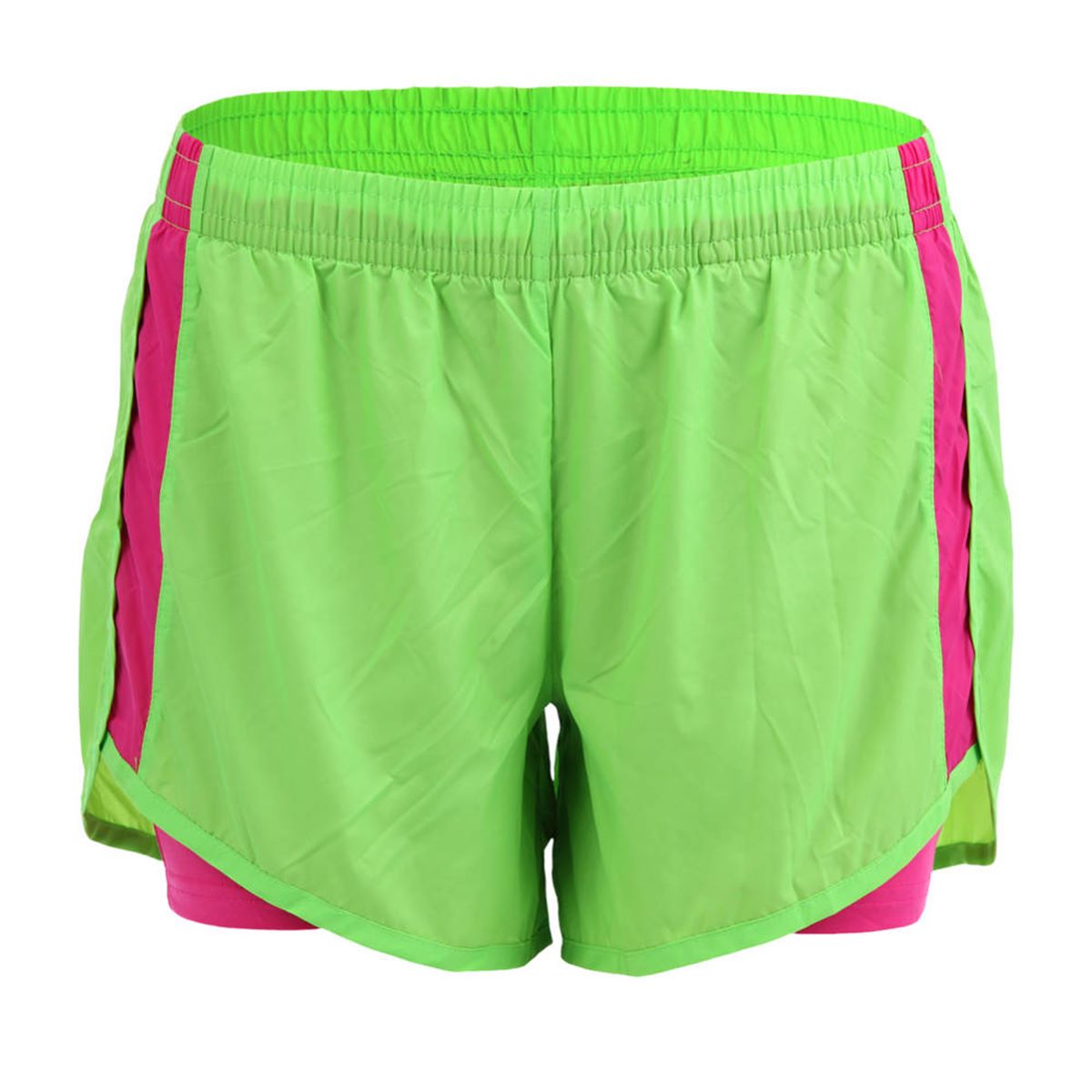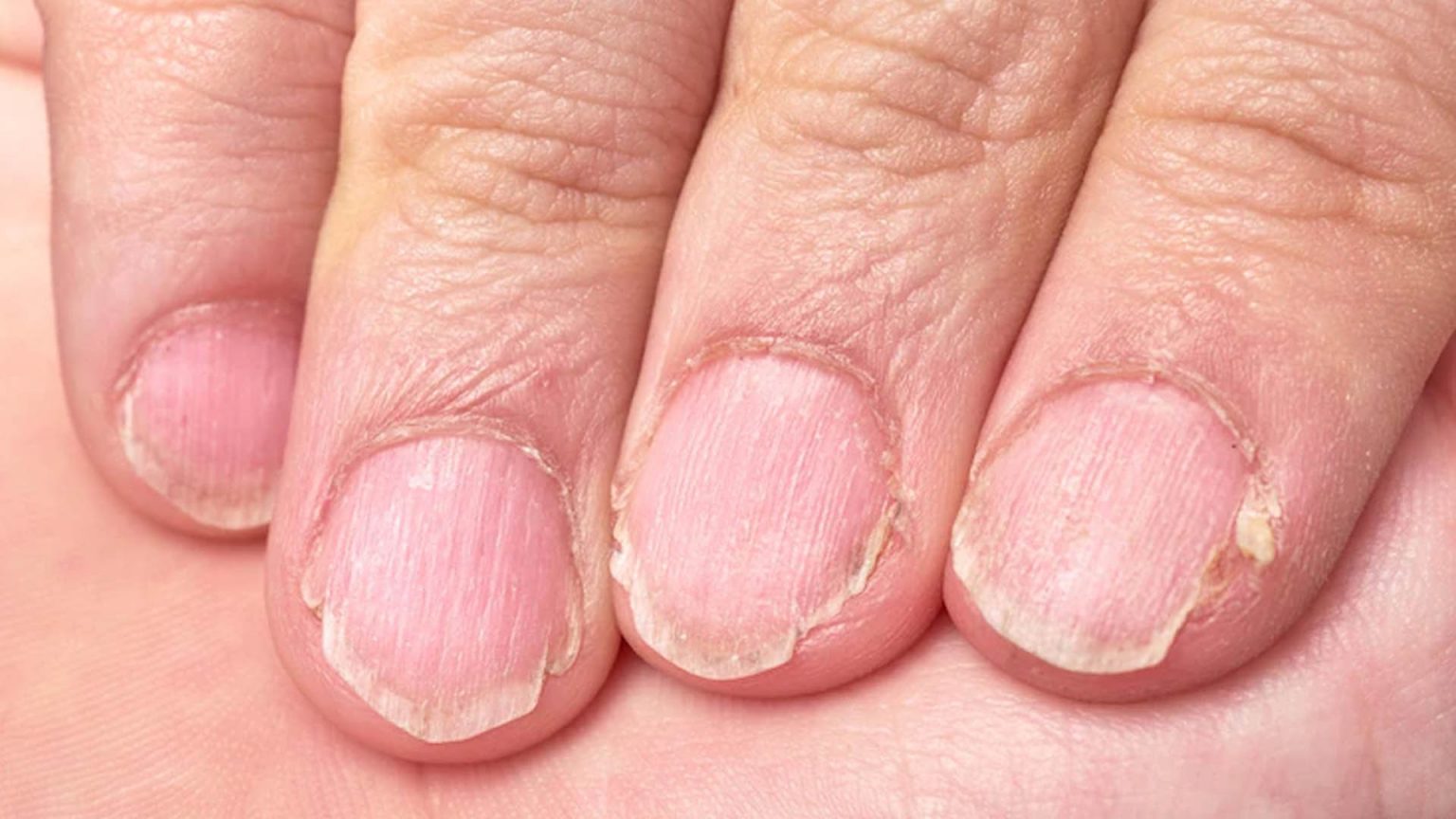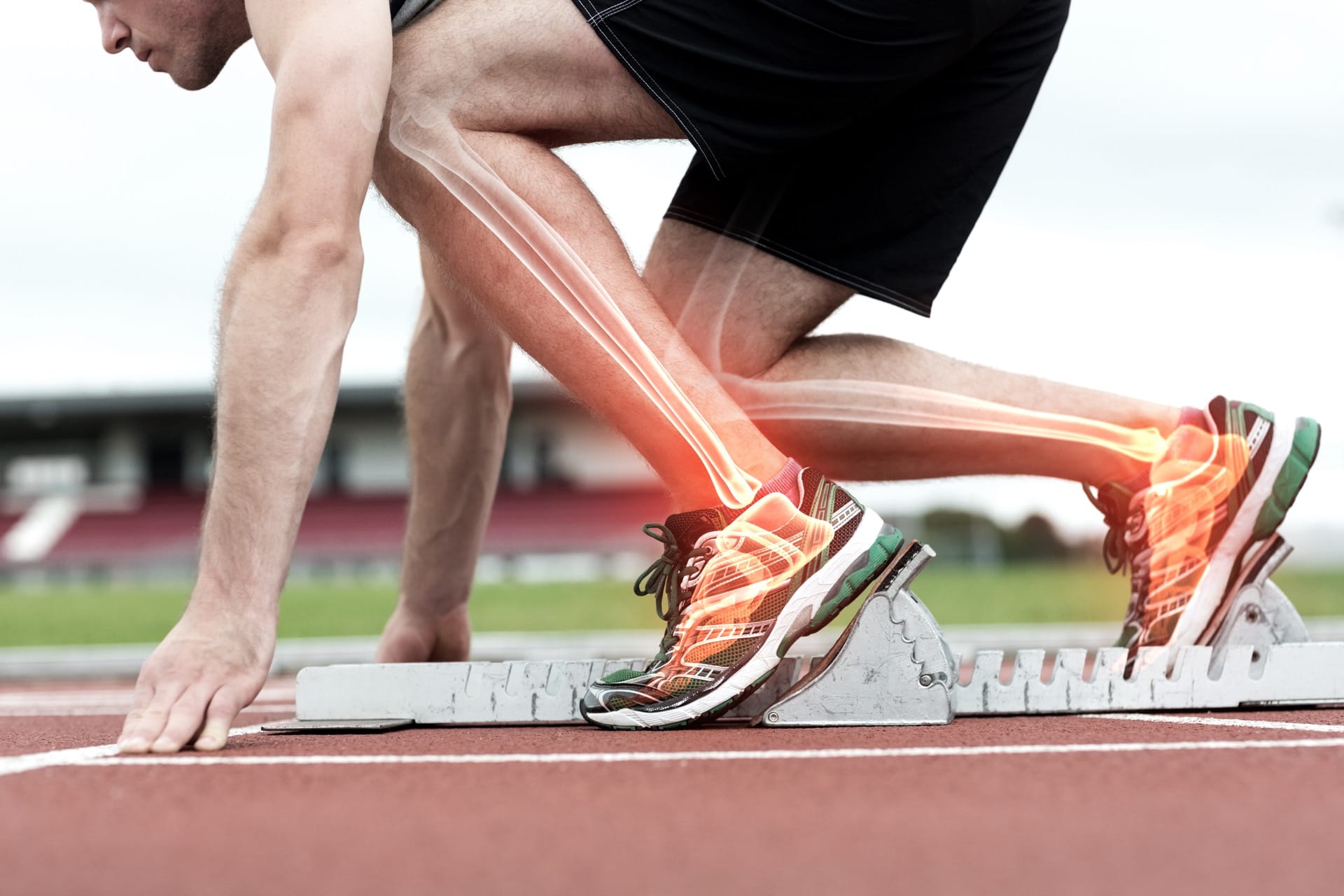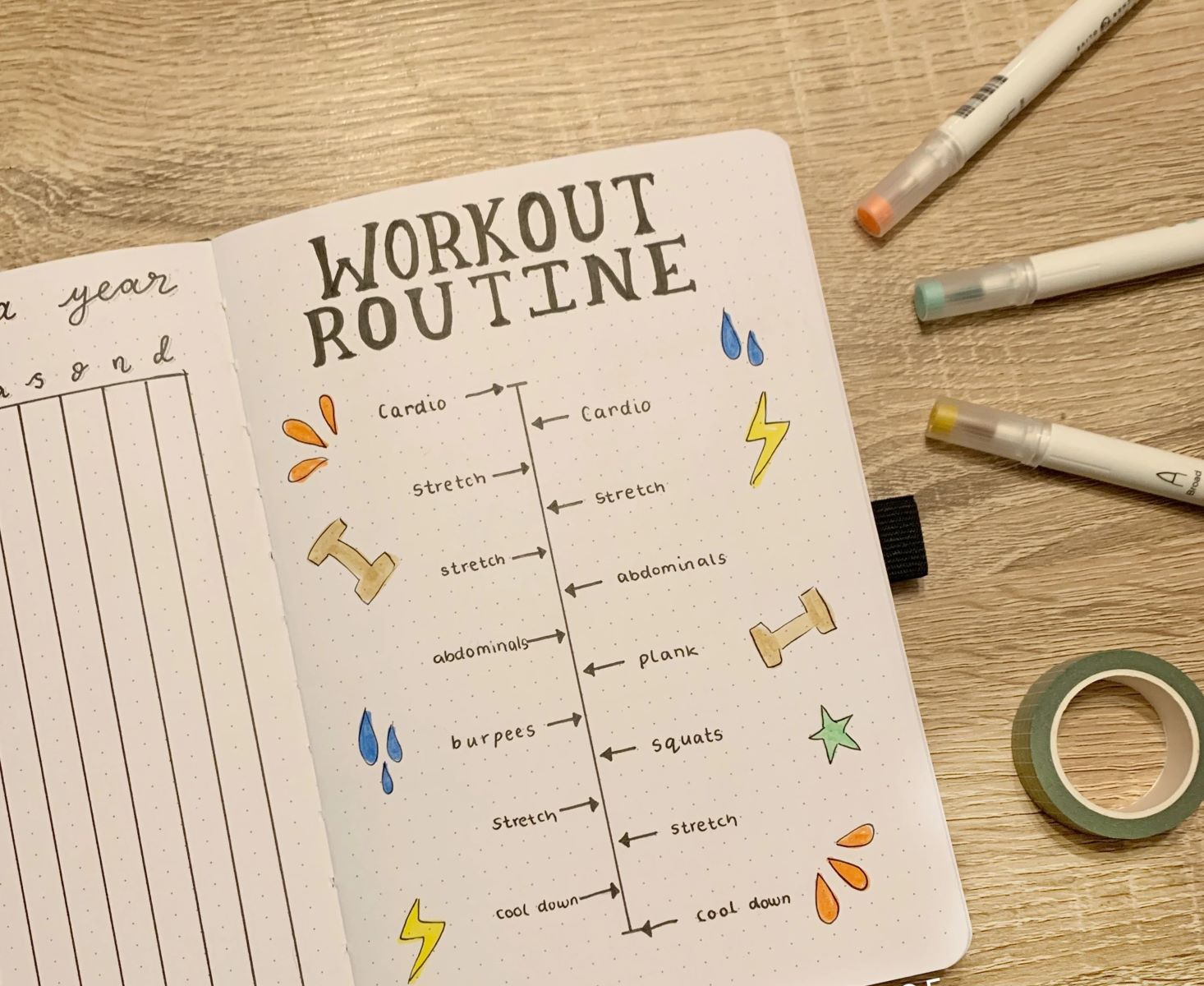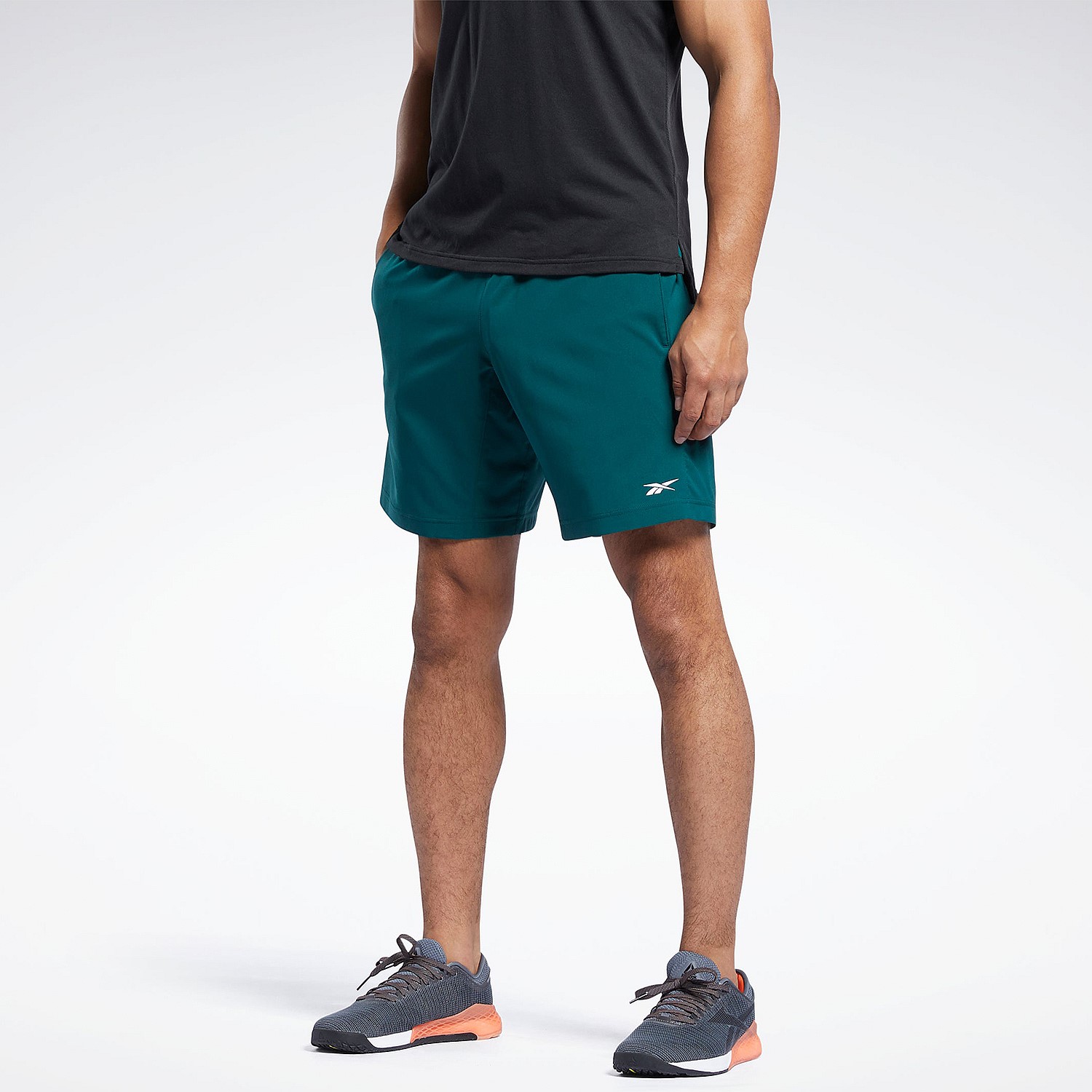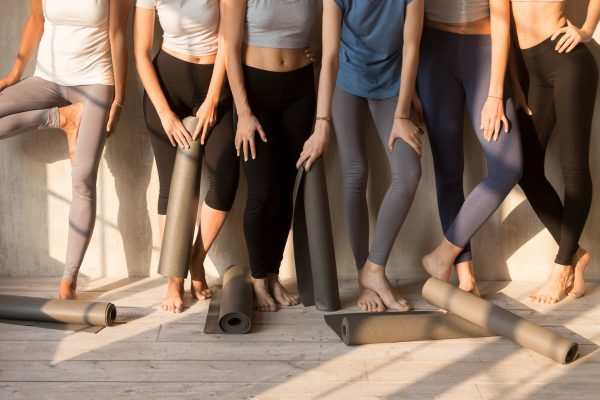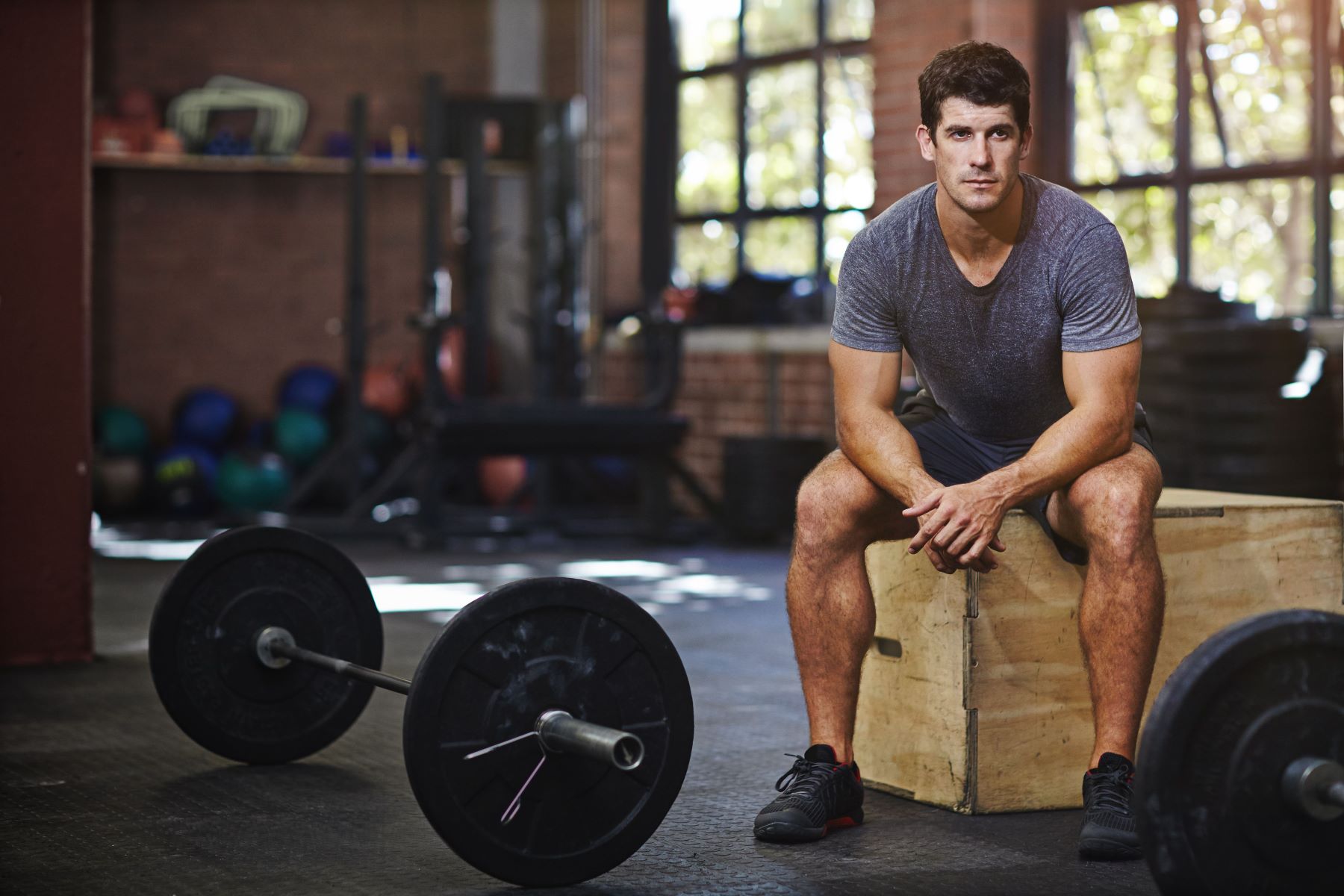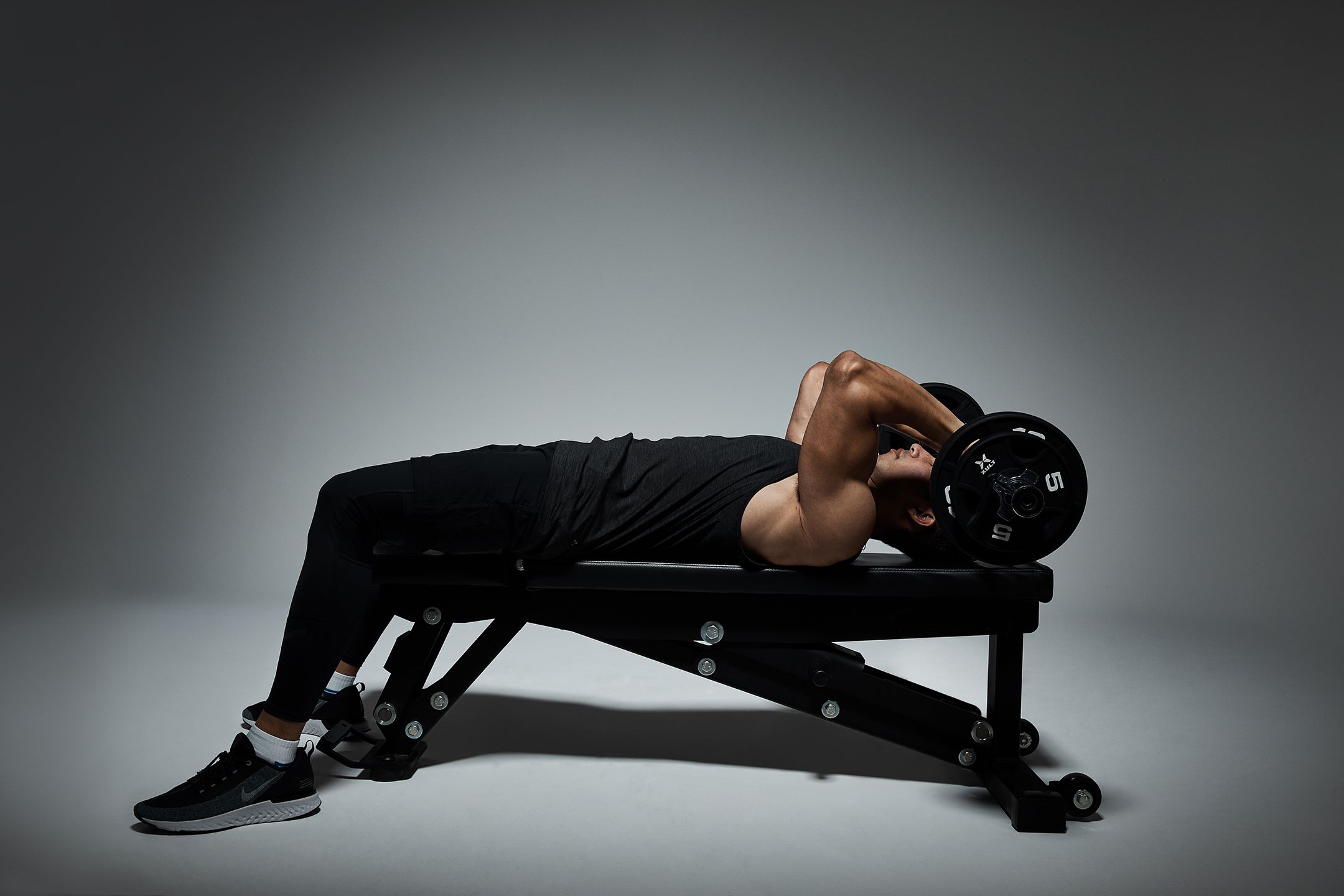

Featured
What Do Skull Crushers Workout
Modified: August 18, 2023
Discover the benefits of skull crushers as a featured exercise for your workouts. Learn how to properly perform this tricep exercise to maximize your gains and build strong arms.
What Do Skull Crushers Work Out
Skull crushers, also known as lying triceps extensions, are a popular exercise that primarily targets the triceps muscles. As the name suggests, skull crushers involve lowering a weight (such as a barbell or dumbbells) towards your head, hence the skull reference.
When performed correctly, skull crushers effectively isolate and target the triceps muscles, which are located on the back of the upper arm. These muscles are responsible for elbow extension and play a crucial role in arm strength and stability.
Skull crushers work out the long head, medial head, and lateral head of the triceps. The long head is the largest and most visible part of the triceps, located on the upper inside of the arm. The medial head sits beneath the long head, while the lateral head runs along the outer part of the arm.
By targeting these specific muscles, skull crushers help to develop strength, size, and definition in the triceps. This is particularly beneficial for individuals looking to improve their arm aesthetics, enhance pushing movements, or increase overall upper body strength.
In addition to targeting the triceps, skull crushers also engage the muscles of the shoulders and chest to a lesser extent. The deltoids (shoulder muscles) work to stabilize and control the movement, while the pectoralis major (chest muscle) assists in shoulder extension during the exercise.
While skull crushers primarily focus on the triceps muscles, they can also indirectly engage the core muscles for stability and balance. Your core muscles help to maintain proper form and prevent excessive arching or movement of the back during the exercise.
Overall, skull crushers are a highly effective exercise for working out the triceps muscles. They can be incorporated into your training routine to enhance arm strength, size, and definition. However, it is important to remember that proper form and technique are crucial to prevent injury and maximize the benefits of the exercise.
Introduction
Skull crushers are a popular exercise in the world of strength training and bodybuilding. If you’re looking to pump up your arm muscles and work on developing stronger and more defined triceps, then skull crushers might just be the exercise for you. This compound movement targets the triceps muscles, which are essential for various pushing movements and overall upper body strength.
The name “skull crushers” might sound intimidating, but fear not! This exercise is not about crushing your skull (despite what the name suggests). Instead, it refers to the motion of lowering a weight towards your head, as if you were about to gently touch your skull with it. Of course, it’s important to practice proper form and control to avoid any accidents and ensure a safe and effective workout.
Skull crushers are typically performed on a flat bench, although they can also be done on an inclined bench or a decline bench for added variations. You can use a barbell, dumbbells, cables, or even resistance bands to perform this exercise. The choice of equipment depends on your personal preference and the resources available to you.
In this article, we will explore the anatomy of the triceps muscles, the technique of skull crushers, the primary and secondary muscles targeted, as well as the benefits and variations of this exercise. Additionally, we will provide you with some tips for proper execution and precautions to keep in mind when performing skull crushers.
Whether you’re a beginner looking to strengthen your arms or an experienced lifter aiming to take your triceps to the next level, understanding the mechanics and benefits of skull crushers will be invaluable in achieving your fitness goals. So, let’s dive in and discover how this exercise can help you maximize your triceps development and improve your overall upper body strength.
The Anatomy of the Triceps
Before diving into the technique and benefits of skull crushers, it’s important to have a basic understanding of the anatomy of the triceps muscles. The triceps brachii, commonly referred to as the triceps, is a three-headed muscle located on the back of the upper arm. These three heads are the long head, the medial head, and the lateral head.
The long head of the triceps is the largest and most prominent of the three heads. It originates from the scapula (shoulder blade) and runs down the back of the arm, inserting into the olecranon process of the ulna bone in the forearm. The long head plays a crucial role in arm extension and contributes significantly to the overall size and shape of the triceps.
The medial head is situated underneath the long head and runs parallel to it. It originates from the upper half of the humerus bone and inserts into the ulna bone. The medial head adds thickness to the triceps and is responsible for much of the strength and stability during pushing movements.
The lateral head is located on the outer side of the arm and is responsible for the “horseshoe” shape often associated with well-developed triceps. It originates from the humerus bone, just above the radial groove, and also inserts into the ulna bone.
Working together, these three heads of the triceps are responsible for extending the elbow joint. They play a vital role in movements such as pushing, straightening the arm, and stabilizing the shoulder girdle.
To effectively target and develop the triceps muscles, it’s important to engage all three heads through various exercises and movements. Skull crushers, with their focus on elbow extension and isolation of the triceps, are an excellent exercise choice for specifically targeting and strengthening these muscles.
Understanding the anatomy of the triceps muscles can help you visualize the muscle groups at work during your workout. By having awareness of the different heads of the triceps and how they function, you can better tailor your training routine and focus on maximizing your triceps development.
The Technique of Skull Crushers
The technique of performing skull crushers is crucial to ensure maximum effectiveness and prevent injury. Here is a step-by-step guide on how to properly execute this exercise:
- Choose the appropriate equipment: Select a barbell, dumbbells, or any other equipment suitable for your fitness level and preference. Make sure the weight is manageable and allows you to maintain proper form throughout the exercise.
- Lie down on a flat bench: Position yourself on a flat bench with your feet firmly planted on the ground. Keep your upper back, head, and glutes in contact with the bench. Maintain a slight arch in your lower back to ensure stability.
- Grip the bar or dumbbells: If using a barbell, grab it with an overhand grip that is slightly narrower than shoulder-width apart. If using dumbbells, hold them in each hand with your palms facing each other.
- Start with your arms extended: Begin with your arms fully extended above your chest, perpendicular to the floor. Engage your triceps to hold the weight in this position.
- Lower the weight with control: While keeping your upper arms still and perpendicular to the floor, slowly lower the bar or dumbbells towards your forehead. Control the movement and avoid allowing the weight to drop too quickly.
- Pause at the bottom: Once the weight is near your forehead or slightly above, hold the position for a brief moment to engage the triceps muscles fully. This pause allows for increased muscle activation and development.
- Extend your arms back up: Using your triceps muscles, push the weight back up to the starting position by extending your arms fully. Focus on the contraction in the triceps as you complete the movement.
- Repeat for the desired number of repetitions: Perform the skull crushers for the recommended number of repetitions, maintaining proper form and control throughout each repetition.
- Adjust the weight and modifications: If needed, adjust the weight or modify the exercise according to your fitness level and comfort. You can also experiment with different variations, such as using an inclined or declined bench, to target the triceps muscles from different angles.
Proper form and technique should always be prioritized over the amount of weight lifted. Start with lighter weights and focus on mastering the movement before gradually increasing the load. It’s also essential to listen to your body and avoid any discomfort or pain during the exercise. If you experience any discomfort, consult with a fitness professional or healthcare professional to ensure proper form and prevent injury.
Primary Muscles Targeted by Skull Crushers
Skull crushers are renowned for their ability to isolate and target the triceps muscles. The triceps brachii, a three-headed muscle located on the back of the upper arm, is the primary muscle group engaged during this exercise. Let’s take a closer look at how skull crushers specifically target and work the triceps:
1. Long Head of the Triceps: The long head is the largest and most visible part of the triceps. When performing skull crushers, the long head is the primary muscle targeted. As you lower the weight towards your head, the long head of the triceps contracts to control and slow down the movement. This contraction places significant stress on the muscle fibers, leading to its growth and development.
2. Medial Head of the Triceps: The medial head of the triceps is located underneath the long head and works synergistically during skull crushers. While it is not the primary muscle targeted, it plays a supportive role in stabilizing the movement and adds thickness to the overall triceps development.
3. Lateral Head of the Triceps: The lateral head of the triceps, situated on the outer side of the arm, also contributes to the movement during skull crushers. Although it is not as prominently engaged as the long head, it assists in elbow extension and adds to the overall size and definition of the triceps.
By targeting these specific muscles, skull crushers provide an intense and focused stimulus to the triceps. This leads to increased muscle activation, hypertrophy (muscle growth), and strength development. Over time, consistent skull crusher workouts can help you achieve stronger, more defined, and well-developed triceps.
It’s worth noting that the involvement of the different heads of the triceps can vary depending on the specific variation of skull crushers being performed. However, regardless of the variation, the triceps muscles are always the primary muscles engaged in the exercise.
Remember, to maximize the benefits and results, it’s important to maintain proper form, execute the exercise with controlled movements, and progressively overload the muscles by gradually increasing the weight or intensity over time.
Secondary Muscles Engaged in Skull Crushers
While skull crushers primarily target the triceps muscles, several secondary muscles are also engaged to support the movement and maintain stability. These secondary muscles work synergistically with the triceps, assisting in the execution of skull crushers. Let’s explore the secondary muscles involved:
1. Deltoids (Shoulder Muscles): The deltoids, specifically the anterior (front) and medial (side) heads, play a significant role in stabilizing the shoulder joint during skull crushers. As you lower the weight towards your head, the deltoids are activated to maintain proper form and control throughout the movement. However, the involvement of the deltoids is relatively low compared to the triceps.
2. Pectoralis Major (Chest Muscle): The pectoralis major muscles, located in the chest region, are partially engaged during skull crushers. As the triceps extend the elbow, the pectoralis major assists in shoulder extension. Although the chest muscles are not the primary focus of the exercise, they contribute to the overall stability and control of the movement.
3. Core Muscles: The core muscles, including the rectus abdominis, transverse abdominis, and obliques, are indirectly engaged during skull crushers. The core muscles help stabilize the spine and maintain proper posture throughout the exercise. By keeping the core muscles engaged, you ensure optimal form and reduce the risk of injury.
4. Forearms: The forearm muscles, including the brachialis and brachioradialis, play a supportive role in assisting the triceps and maintaining grip strength during skull crushers. While they are not the primary focus, they contribute to the overall stability and control of the exercise.
While these secondary muscles are involved during skull crushers, it’s important to note that their level of activation is relatively lower compared to the triceps. This is because skull crushers are specifically designed to isolate and target the triceps muscles. However, the engagement of the secondary muscles adds to the overall effectiveness of the exercise and helps promote balanced muscle development.
By incorporating skull crushers into your training routine, you can effectively target multiple muscle groups, including the triceps, deltoids, pecs, core, and forearms. This comprehensive engagement not only enhances your upper body strength but also improves muscle coordination and stability.
Remember to maintain proper form, execute the exercise with controlled movements, and listen to your body. If you experience any discomfort or pain, adjust the weight or seek guidance from a fitness professional to ensure optimal performance and prevent injury.
Benefits of Skull Crushers
Skull crushers are a highly effective exercise for targeting and developing the triceps muscles. Incorporating this exercise into your training routine can provide numerous benefits that go beyond just aesthetic improvements. Here are some key benefits of including skull crushers in your workout regimen:
1. Triceps Development: The primary benefit of skull crushers is the significant development of the triceps muscles. This exercise specifically targets all three heads of the triceps, leading to increased muscle size, definition, and strength. Well-developed triceps not only enhance the appearance of the upper arm but also contribute to improved performance in pushing movements like bench press and shoulder press.
2. Improved Upper Body Strength: Skull crushers are a compound movement that engages multiple muscle groups, including the triceps, deltoids, and pectoralis major. By strengthening these key upper body muscles, you can improve overall upper body strength and power. This can have a positive impact on various activities and sports that require pushing or pressing movements, such as boxing, swimming, and weightlifting.
3. Muscle Balance: The triceps are often overshadowed by the biceps as a prominent arm muscle. However, neglecting the triceps can lead to muscle imbalances and an increased risk of injuries. Skull crushers help address this imbalance by specifically targeting and strengthening the triceps. This improves overall muscle balance in the arms, which can enhance both appearance and function.
4. Increased Lockout Strength: The lockout phase of lifting involves fully extending the elbow joint, which heavily relies on triceps strength. By regularly performing skull crushers, you can improve your lockout strength, allowing you to lift heavier weights and overcome sticking points in other exercises. This can have a positive impact on your overall weightlifting progress and performance.
5. Versatility and Convenience: Skull crushers can be performed with various equipment such as barbells, dumbbells, cables, or resistance bands. This versatility makes the exercise accessible regardless of the equipment available to you. Additionally, skull crushers can be easily incorporated into your workout routine, either as a standalone exercise or as part of a bigger triceps-focused workout.
6. Time Efficiency: Skull crushers are a compound movement that targets multiple muscles simultaneously. By including this exercise in your training, you can save time by efficiently working various muscle groups in one exercise. This is especially beneficial for individuals with limited time for workouts who still want to effectively train their upper body.
7. Improved Functional Abilities: The triceps are essential for everyday activities that involve pushing or pressing motions, such as pushing open a heavy door or lifting objects overhead. By strengthening the triceps through skull crushers, you can improve your functional abilities and make these tasks easier and more efficient.
Overall, including skull crushers in your training routine can lead to well-developed triceps, improved upper body strength, enhanced muscle balance, and increased functional abilities. So, don’t overlook the benefits of this powerful exercise and start incorporating skull crushers into your workouts to attain stronger and more defined arms.
Common Variations of Skull Crushers
While the classic skull crusher exercise is highly effective, there are several variations that you can incorporate into your training routine to add variety and target the triceps muscles from different angles. Here are some common variations of skull crushers:
1. Close Grip Skull Crushers: This variation involves bringing your hands closer together on the barbell or dumbbells, with a grip that is narrower than shoulder-width apart. The close grip places greater emphasis on the inner part of the triceps, specifically targeting the medial head. This variation can help develop more thickness and strength in the triceps muscles.
2. Incline Skull Crushers: Incline skull crushers are performed on an inclined bench, with your head positioned higher than your feet. Performing skull crushers on an incline alters the angle and places more emphasis on the upper part of the triceps, particularly the long head. This variation helps to develop the upper portion of the triceps, creating a more balanced and well-rounded look.
3. Decline Skull Crushers: Decline skull crushers involve performing the exercise on a decline bench, with your head positioned lower than your feet. This variation targets the lower part of the triceps, placing more emphasis on the lateral head. The decline angle increases the difficulty of the exercise and provides a unique challenge, helping to enhance overall triceps development.
4. Dumbbell Skull Crushers: Instead of using a barbell, you can perform skull crushers with dumbbells. This variation allows for greater freedom of movement and helps to improve stability and balance. Dumbbell skull crushers also provide an additional challenge to the stabilizing muscles of the arms and shoulders. They are a great option for those who prefer using dumbbells or have limited access to barbells.
5. Cable Skull Crushers: Cable skull crushers involve using a cable machine with a rope or straight bar attachment. This variation provides constant tension on the triceps throughout the entire range of motion. Cable skull crushers allow for a smooth and controlled movement, making them an excellent option for individuals focusing on muscle activation and mind-muscle connection.
6. One-Arm Skull Crushers: One-arm skull crushers are performed by using a single dumbbell or cable attachment, working one arm at a time. This variation helps to address any muscle imbalances between the left and right triceps, ensuring balanced development. One-arm skull crushers also require increased core engagement for stability and provide an opportunity to isolate and focus on each arm individually.
Remember, when incorporating variations of skull crushers into your routine, proper form and technique should always be maintained. Start with lighter weights and gradually progress to heavier loads as your strength and proficiency improve. It’s also important to listen to your body and choose the variations that work best for your goals and physical capabilities.
By adding these variations to your workout routine, you can challenge your triceps muscles in new ways, prevent plateaus, and promote continuous growth and development.
Tips for Proper Execution
To ensure optimal results and minimize the risk of injury during skull crushers, it’s essential to focus on proper execution and technique. Here are some tips to help you perform skull crushers effectively:
1. Warm-Up: Before starting any exercise, including skull crushers, it’s important to warm up your muscles to increase blood flow and prepare them for the workout. Perform dynamic stretches and light exercises that target the triceps, such as arm circles or triceps extensions with lighter weights.
2. Maintain Proper Form: Throughout the exercise, maintain proper form to maximize the benefits and reduce the risk of injury. Keep your feet flat on the ground, your back and head in contact with the bench, and your core engaged for stability. Avoid arching your back excessively or using momentum to lift the weight.
3. Control the Movement: One of the key aspects of skull crushers is controlling the movement throughout the exercise. Lower the weight in a slow, controlled manner, taking around 2-3 seconds to reach the bottom position near your forehead. Similarly, push the weight back up using controlled force, focusing on the contraction in the triceps.
4. Mind-Muscle Connection: Concentrate on engaging and feeling the triceps muscles working during each repetition. Visualize the muscles contracting and performing the movement. This mind-muscle connection can help you optimize muscle activation and gain better results from your skull crusher workouts.
5. Choose the Right Weight: Select a weight that challenges your triceps muscles but still allows you to maintain proper form and control throughout the exercise. It’s better to start with lighter weights and gradually increase the load over time as your strength and technique improve.
6. Breathe Properly: Remember to breathe properly during skull crushers to ensure a steady flow of oxygen to your muscles. Exhale as you push the weight back up and inhale as you lower it towards your forehead. Proper breathing helps maintain stability and keeps your focus on executing the movement effectively.
7. Rest and Recovery: Allow for sufficient rest and recovery between sets and workouts. Overtraining can lead to decreased performance and increased risk of injury. Listen to your body’s signals and give yourself adequate time to recuperate. This will help you maintain progress and perform skull crushers with proper quality and intensity.
8. Seek Professional Guidance: If you’re new to skull crushers or strength training in general, it can be beneficial to seek guidance from a fitness professional. They can teach you proper form, offer personalized modifications, and ensure you’re performing the exercise correctly to maximize its benefits.
By incorporating these tips into your skull crusher workouts, you can enhance your performance, reduce the risk of injury, and achieve maximum gains in triceps strength and development.
Precautions and Potential Risks
While skull crushers are an effective exercise for targeting the triceps muscles, it’s important to take certain precautions to ensure your safety and minimize the risk of injury. Here are some precautions and potential risks to consider before performing skull crushers:
1. Start with Proper Technique: Proper technique is crucial for executing skull crushers safely and effectively. Before adding heavy loads or challenging variations, ensure that you have mastered the basic form and movement. It’s recommended to seek guidance from a qualified fitness professional to learn the correct technique.
2. Use Appropriate Weight: When performing skull crushers, choose a weight that is appropriate for your fitness level and allows you to maintain proper form. Starting with lighter weights will allow you to focus on technique and progressively increase the load over time as you become stronger and more comfortable with the exercise.
3. Avoid Excessive Range of Motion: Lower the weight towards your forehead or slightly above, and avoid going too low where it causes strain on the shoulder joints or puts excessive pressure on the elbow. Maintaining control and proper range of motion is more important than going for excessive depth.
4. Watch Your Elbow Position: During skull crushers, make sure to keep your elbows pointing towards the ceiling and avoid flaring them out to the sides. Flaring the elbows excessively can place unnecessary stress on the shoulder joints and lead to discomfort or injury. Keep your elbows stable throughout the movement.
5. Avoid Overloading: Gradually increase the weight used for skull crushers to avoid overloading the triceps muscles and risking injury. Sudden significant increases in weight can strain the muscles and joints, leading to potential tendon or ligament damage. Progress gradually to allow your muscles and connective tissues to adapt to the increased load.
6. Listen to Your Body: Pay attention to any discomfort or pain during skull crushers. If you experience sharp or intense pain, especially in the elbows or wrists, stop the exercise immediately and consult with a medical professional or fitness expert. Ignoring warning signs can worsen an existing condition or lead to an injury.
7. Ensure Proper Recovery: Incorporate rest days into your training routine to give your triceps and other muscles ample time to recover. Adequate rest and recovery are crucial for muscle repair and growth, reducing the risk of overuse injuries. Avoid performing skull crushers or any other triceps-focused exercises on consecutive days.
8. Seek Medical Advice if Needed: If you have any pre-existing medical conditions or concerns, such as elbow or shoulder injuries, it is important to consult with a healthcare professional before attempting skull crushers. They can provide specific guidance and modifications to ensure your safety and prevent exacerbation of any underlying issues.
Remember, proper technique, gradual progression, and listening to your body are key to minimizing the potential risks associated with skull crushers. By taking these precautions, you can safely integrate skull crushers into your workout routine and reap the benefits without compromising your well-being.
Incorporating Skull Crushers into Your Workout Routine
Skull crushers are a versatile exercise that can be incorporated into your workout routine to target and develop your triceps muscles. Here are some tips on how to effectively integrate skull crushers into your training program:
1. Determine your Training Frequency: Decide how often you want to train your triceps. You can include skull crushers in your routine 1-2 times per week, depending on your overall training split and goals. It’s important to allow adequate rest and recovery between sessions to promote muscle growth and prevent overuse injuries.
2. Consider Exercise Order: The placement of skull crushers within your workout routine can affect their effectiveness. Generally, it’s recommended to perform compound exercises, such as bench press or shoulder press, before isolation exercises like skull crushers. This ensures that your triceps are not already fatigued when performing skull crushers, allowing you to lift heavier weights and target the muscles more effectively.
3. Focus on Proper Form and Intensity: Prioritize proper form over the amount of weight lifted. Start with a weight that allows you to perform the exercise with good technique and gradually increase the load as you become more proficient. Aim for a moderate to high intensity, challenging the triceps muscles while maintaining control throughout the movement.
4. Select the Number of Sets and Repetitions: The number of sets and repetitions will depend on your fitness level and goals. A common approach is to perform 3-4 sets of 8-12 repetitions for muscle hypertrophy (muscle growth). Adjust the sets and reps according to your specific needs and preferences. You can also incorporate different rep ranges and training protocols to add variety and stimulate muscle adaptation.
5. Explore Variation and Progression: Challenge your triceps by incorporating different variations of skull crushers. This can include using different equipment, such as dumbbells or cables, or changing the angle of the bench to perform incline or decline skull crushers. Additionally, progressively increase the weight over time or experiment with tempo variations (e.g., slower eccentric phase) to continue challenging the triceps and promoting growth.
6. Include Supplementary Triceps Exercises: While skull crushers are a great exercise for triceps development, it’s beneficial to include other triceps exercises in your routine to provide additional stimulus. Exercises like triceps pushdowns, close grip bench press, or dips can complement skull crushers and help develop stronger and more defined triceps.
7. Rest and Recovery: Allow sufficient rest between sets and workouts to promote muscle recovery. This ensures your triceps have time to repair and grow stronger. Adequate rest and recovery are crucial for optimizing your progress and preventing overtraining. Consider spacing your skull crusher workouts at least 48 hours apart or alternating them with exercises that target different muscle groups.
8. Progress Gradually: As you get stronger, gradually increase the weight, repetitions, or intensity of your skull crusher workouts. Progressing in a gradual and systematic manner allows your muscles to adapt and continuously challenge your triceps. Keep track of your progress by recording weights used, sets, and reps to monitor your improvements over time.
Remember, individual preferences, goals, and fitness levels may vary, so it’s important to customize your workout routine to suit your specific needs. Proper form, consistency, and progressive overload are key factors in maximizing the benefits of incorporating skull crushers into your training program.
Conclusion
Skull crushers are a highly effective exercise for targeting and developing the triceps muscles. By incorporating this compound movement into your workout routine, you can significantly enhance triceps strength, size, and definition. The isolation and focus on the triceps make skull crushers an essential addition to any upper body training program.
Throughout this article, we have explored the anatomy of the triceps muscles, the technique of skull crushers, and the primary and secondary muscles engaged in the exercise. We have also discussed the benefits of skull crushers, including triceps development, improved upper body strength, muscle balance, and increased functional abilities.
We explored common variations of skull crushers, such as close grip, incline, decline, dumbbell, cable, and one-arm variations, providing you with options to adjust the exercise based on your preferences and fitness level. Additionally, we offered tips for proper execution, precautions to consider, and guidance on how to incorporate skull crushers into your workout routine effectively.
Remember, safety and proper form should always be the top priority when performing skull crushers or any other exercise. Gradually progress the weight and intensity while maintaining control and listening to your body’s signals to prevent injury and ensure steady progress.
Whether your goal is to build impressive triceps, improve upper body strength, or enhance your overall physique, skull crushers are an exercise worth integrating into your training regimen. Alongside a well-rounded fitness plan that includes proper nutrition, recovery, and other exercises, skull crushers can help you achieve your desired results.
So, begin incorporating skull crushers into your workouts, adjust the exercise variations to your liking, and enjoy the benefits of stronger and more defined triceps. Keep pushing yourself, stay consistent, and strive for progress to unleash the full potential of your triceps with skull crushers.

